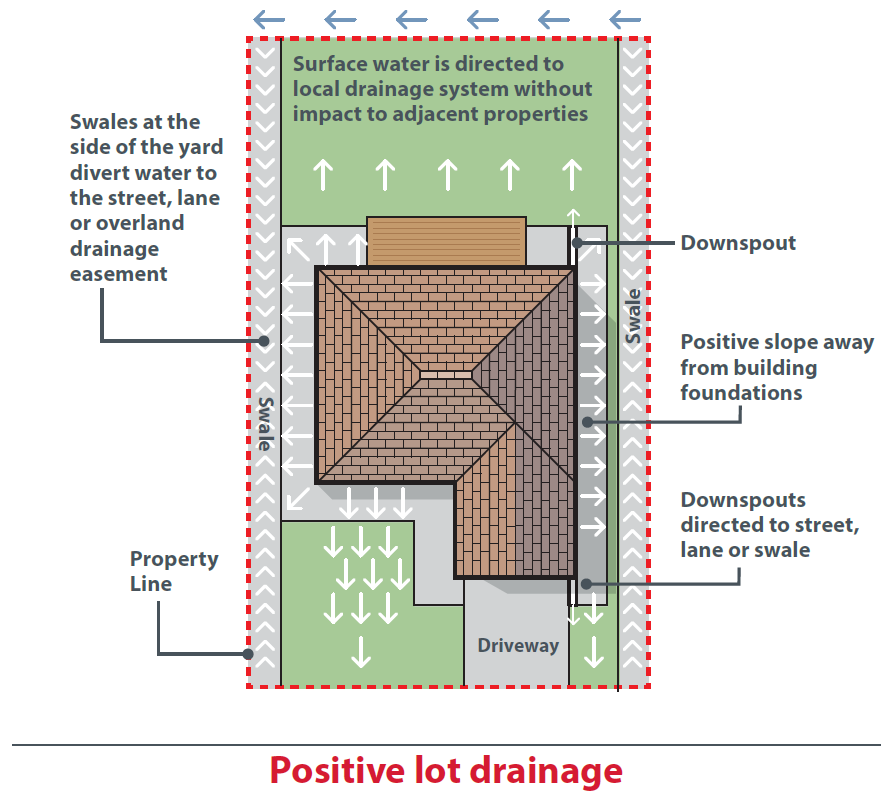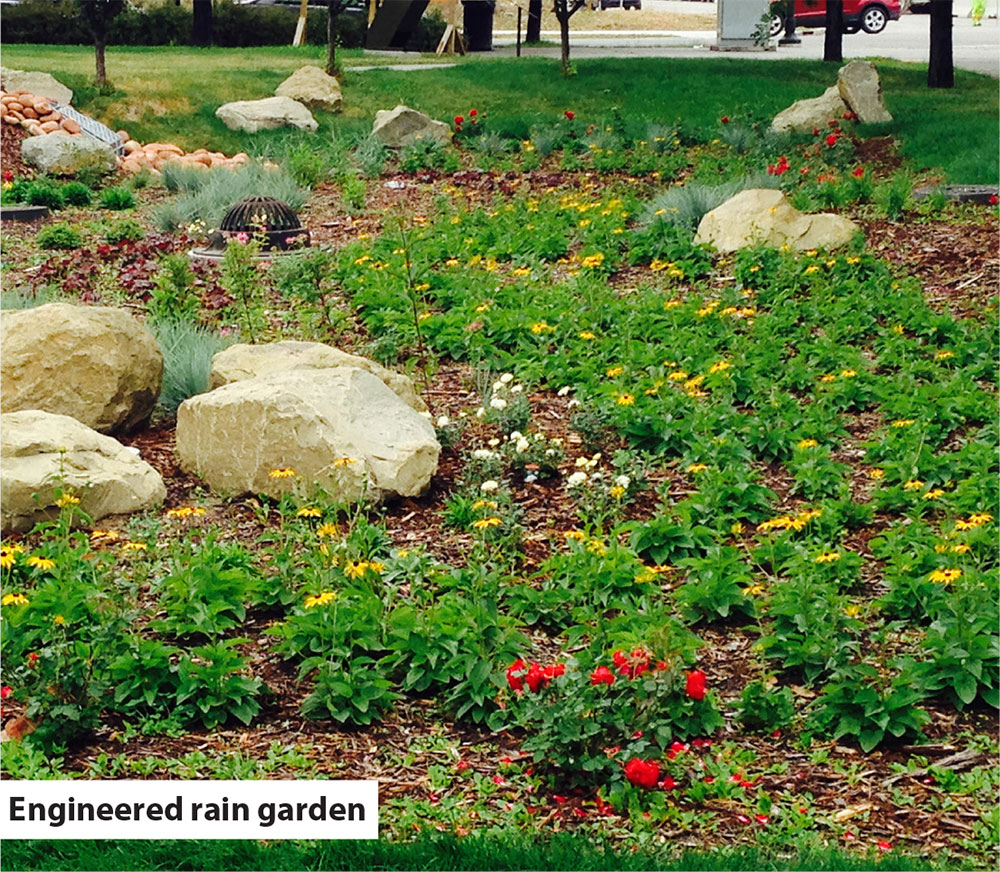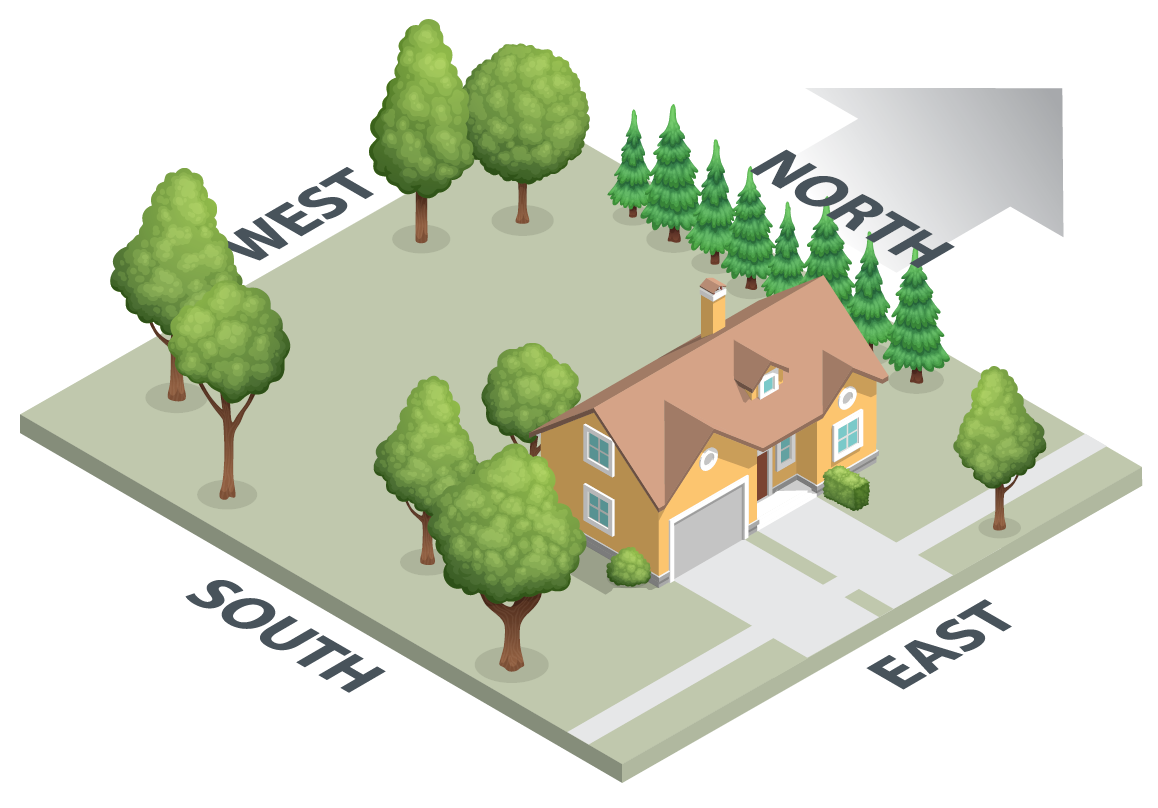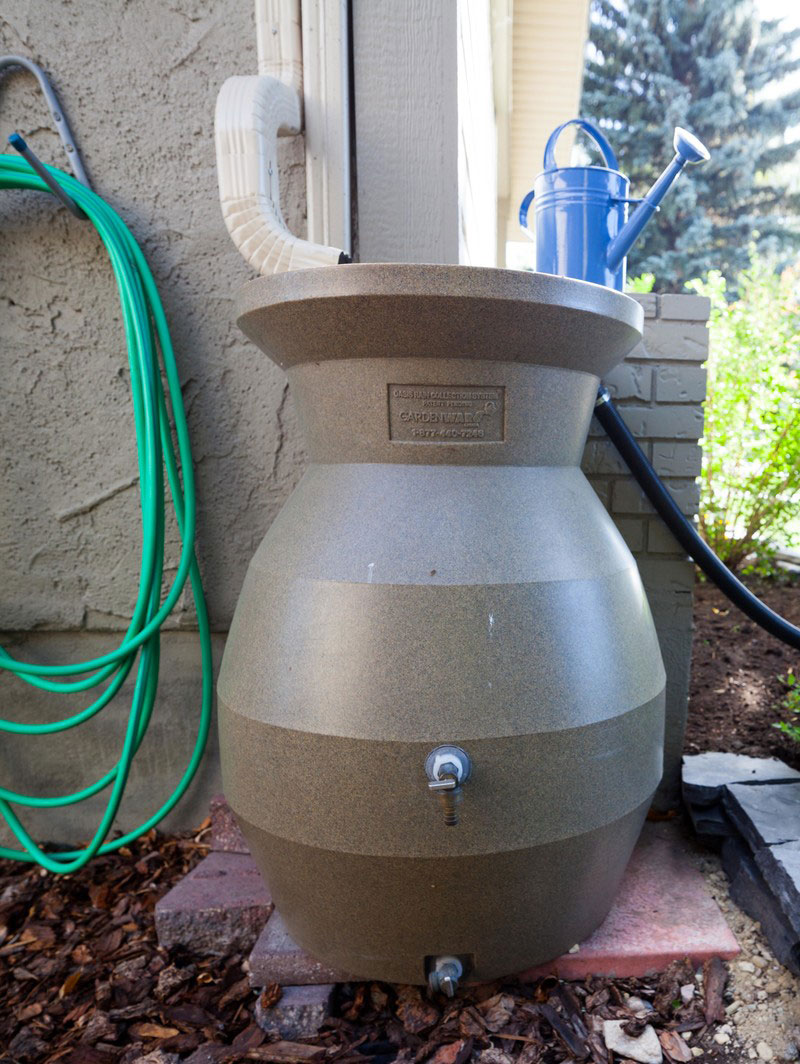Climate ready measures: Landscaping and yard
Flood protection
Lot grading
One of the most effective means of protecting your home from flooding is to ensure your lot drains away from your house. If the surface of your lot doesn’t slope away from your house, water can sit close to your foundation. This can cause water seepage and damage to the foundation walls.
In many older homes, the “backfill zone” – the part of your yard that directly abuts your home – may have low spots directly beside your home. You may need to add and compact soil in the backfill zone to ensure your lot slopes away from the walls of your home.
Ensure that your deck, fence, landscaping and other yard works do not compromise the integrity of your lot grading and drainage.
For more information, visit The City of Calgary’s Lot Grading and Positive Lot Drainage webpage.

Low impact development (LID)
Low Impact Development (LID) includes a variety of landscaping and design practices that slows water down, spreads it out and soaks it in, treating stormwater as a resource rather than a waste product. These practices improve the quality and decrease the volume, of stormwater entering our waterways.
Rain gardens are shallow, slightly depressed gardens designed to collect rain water. Rain gardens are easy to construct and can be planted with any combination of trees, shrubs, grasses or perennials, providing an attractive and very effective way to manage stormwater.
These landscaped plant beds capture and filter stormwater before it returns to our stormwater system, and eventually our rivers. When it rains, stormwater is directed into the rain garden. Plants, layers of soil and gravel filter and absorb the stormwater. The silt and other natural solids, like leaves, are collected on top of the gardens. Other pollutants (chemicals and bacteria) are filtered out and used by the soil and plants.
Learn more about residential and engineered rain gardens here.

Permeable pavement
Permeable pavement, also known as pervious or porous paving, is a type of hard surfacing that allows rainfall to percolate into the soil below. Recommended options include:
- permeable interlocking concrete pavements; and
- vegetated permeable pavements, which use plastic, metal, or concrete grids for support and hold grass or other vegetation in place.
Permeable pavements reduce stormwater run-off and help prevent water from ponding on your property. They filter out pollutants, lower runoff water temperatures, improve water quality and promote evaporative cooling which reduces pavement temperatures and consequently the air temperature.
Drought tolerant landscape
Bee friendly landscapes
Pollinator bees and other insects are being negatively impacted by climate changes, including extreme heat and drought conditions. Provide flowering plants such as milkweed and speedwell that help bees and other pollinator insects thrive.
Visit this City website to learn about backyard gardening for pollinators in Calgary.
Water wise plants
Plants that are naturally tolerant to drought require little to no watering and will come back to life after a rainy day. In the face of pressures brought on by a changing climate, a water-efficient YardSmart yard helps keep our community resilient.
Watering your yard
If you already have an existing lawn irrigation system, make sure it is properly programmed and maintained to reduce wasted water and overwatering. Visit The City of Calgary’s Irrigation Set-Up and Maintenance webpage for more details on irrigating your property. Drip irrigation, which applies water directly to the root zone of a plant, is the most efficient method for water and energy use.

Soil and mulch
Adding a base of at least twenty centimeters (eight inches) of good quality soil to your garden or lawn can help with moisture retention and therefore will require less watering.
Adding five to eight centimeters (2-3 inches) of mulch to garden beds and around trees will help retain moisture.
Direct downspouts toward the landscaped areas of your property, including trees, shrubs and rain gardens.

Climate resilient tree planting
It is possible to produce a landscape that will help cool your home in summer and tame the winter winds.
- Consider planting deciduous trees on the south, east and west sides of your house to provide shade in the summer and shed leaves in the winter to let sunlight in.
- If your property allowes, coniferous (evergreen) trees can be planted in a row to protect against high winds. The best location is the prevailing wind side of your house (usually south-west), or the side where there is the least amount of sunshine.
When planting trees on your lot, remember to avoid:
- overhead power lines and underground utilities; and
- planting trees near the foundation of your house to reduce risk of damage to your foundation.
Visit calgary.ca/trees for information on tree maintenance, planting and protection, including which trees are most suitable for Calgary’s climate.

Fire Smart Landscaping
If you live beside forested or heavily grassed tracts of land, consider selecting fire-resistant trees and shrubs. The FireSmart Guide to Landscaping provides a comprehensive list of tree species, including their Hardiness zone, sun/shade preferences and water use requirements. Deciduous (leafy) trees that are resistant to wildfire and grow well in Calgary’s variable weather include Poplar, Birch, Aspen, Maples, and Ash.
For more information about how climate change will impact planted trees and native forests in Alberta, see the Guide to Urban Forest Management in a Changing Climate.
Decks and balconies
Many decks are built out of combustible materials such as wood and plastic. If your home is vulnerable to wildfire risk, consider using a non-combustible material. Enclose the underside of all balconies and decks with a flame-resistant material such as fibre cement board.

Rain barrels and cisterns
Rain barrels collect rainwater from a home’s downspout and provide a free source of water for your yard, reducing demands on potable water supplies.
Rainwater cisterns are a larger version of a rain barrel. The stored water can be used for watering your yard in the event of a water supply disruption, or to reduce your use of freshwater.
- Make sure that the rain barrel can safely overflow away from your home and your neighbour’s home, toward the lawn, planted areas, or a rain garden.
- Rain barrels should be emptied before winter to avoid cracking and damage to the barrel or waterspout.
- Collected rainwater is not potable, which means you should not drink it or use it on food crops.
Learn more about purchasing and using a rain barrel.
Disclaimer: The content of the Climate Ready Home Guide is for informational purposes only and cannot be construed as technical advice with respect to any particular building(s) or construction project(s). The Climate Ready Home Guide does not recommend or endorse specific products or companies. All products and measures should be installed by a professional contractor, according to manufacturer specifications and following all City Bylaws and codes.

